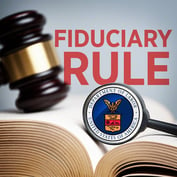As financial advisors try to strengthen their existing client relationships and build new ones, it’s crucial they construct investment portfolios that help customers to reach their financial goals, regardless of whether market conditions are favorable or unfavorable. To that end, ETFs are versatile investment tools that can help.
Market exposure to a wide array of asset classes at an affordable price is the essence of ETF investing. Clearly, both advisors and the investing public are making ETFs a larger portion of their investment portfolios. This even includes funds that invest beyond stocks and bonds touching other major asset classes like commodities, real estate, and currencies.
According to ETFGI, record levels of net new assets (NNA) have also been gathered by U.S. listed ETFs/ETPs, which have gathered $125 billion during the first seven months of 2015, beating the previous record of $116 billion gathered in the first seven months of 2013.
But where will the next boom in ETFs be? Will it be from actively managed funds, 401(k) retirement plans, or alternative asset classes like Bitcoin?
Research magazine spoke with Christian Magoon, CEO OF YieldShares and Amplify Investments, about current and upcoming developments in the fast moving ETF marketplace.
Factor-based investing in the ETF market has gained steam. What do advisors need to know about this trend?
Factor-based investing in the ETF market is here to stay and will continue to expand into new market segments. It is a material driver of ETF asset growth. While there will continue to be a market for single factor based indexes and ETFs (i.e. market cap weighted), the growing preference for multi-factor based indexes by investors and ETF issuers is clear.
You launched the YieldShares High Income ETF (YYY) in June 2013. How has the fund performed?
YYY is an index based ETF that owns a basket of equity and debt closed-ends funds (CEFs) trading at discounts to net asset value. The fund’s benchmark is the ISE High Income Index, which is comprised of 30 CEFs ranked highest overall in three criteria: discount to net asset value, distribution size and liquidity. YYY has a 30-Day SEC Yield of 9.3% while its average CEF is trading at a discount to NAV of more than 11%. The fund has approximately $95 million of assets under management.
The introduction of commission free ETF trading has been one of the biggest developments over the past few years. How much of an impact has it had on asset flows?
Commission free ETF trading has accelerated the adoption of ETFs by the retail investor. After elimination of the transaction cost to buy and sell certain ETFs, investors are even more likely to consider an ETF versus a mutual fund or individual security. Still the universe of commission free ETFs remains fairly limited and could use further expansion.








 August 31, 2015 at 08:00 PM
August 31, 2015 at 08:00 PM











